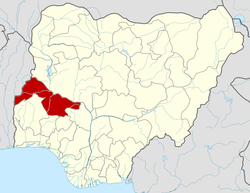Kwara
State of Harmony
QUICK FACTS
*Population: 2,365,353 (2006 census) 3,192,893 (2016 forecast) - 30th of 37
*Percentage of Nigeria’s total population: 1.6%
*Population density: 64
*Landmass: 36,824 sq km (14, 218 sq mi)
*Internally Generated Revenue: N19, 604,303,787.64 (2020)
**State capital: Ilorin
**Local Government Areas: 16
**Current Governor: AbdulRahman AbdulRazaq (All Progressive Congress)
*National Bureau of Statistics
**Kwara State Government
Further Description
KWARA STATE IN PICTURES

